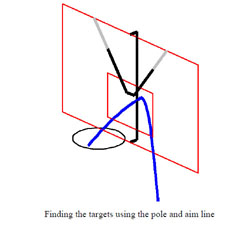Want to Win the NCAA Tournament? Learn Some Physics
It’s March Madness time again, and the fate of millions of NCAA Tournament fans – and bracket sheets – will live and die with gut-wrenching, soul-sapping, last-second three-point shots and rimmed-out free throws.
 How can a team increase its chances of winning the Big Dance? A sound knowledge of physics could be a start.
How can a team increase its chances of winning the Big Dance? A sound knowledge of physics could be a start.
For the love of the game (and science), NC State engineers Chau Tran and Larry Silverberg took millions of basketball shots – OK, they had a computer simulate all the shots; imagine how sore their elbows would have been otherwise – and came up with two really important lessons.
Noonan … Miss it!
First, the engineers quantified the optimal conditions for making a free throw. They say that shooters should launch the shot with about three hertz of back spin, which is a fancy way of saying that the ball should make three complete backspinning revolutions before reaching the hoop. Back spin deadens the ball when it bounces off the rim or backboard, giving the ball a better chance of settling through the net.
Where to aim? The back of the rim, leaving close to 5 centimeters – about 2 inches – between the ball and the back of the rim. Aiming for the center of the basket decreases the probabilities of a successful shot by almost 3 percent.
The engineers say that the ball should be launched at 52 degrees to the horizontal. If you don’t have a protractor in your jersey, that means that the shot should, at the highest point in its arc to the basket, be less than 2 inches below the top of the backboard.
Free-throw shooters should also release the ball as high above the ground as possible, without adversely affecting the consistency of the shot; release the ball so it follows the imaginary line joining the player and the basket; and release the ball with a smooth body motion to get a consistent release speed.
The engineers didn’t include advice on how to stymie the spasms nerve-wracked players get – known in golf as the yips and in other sports as choking – when they’re on the free-throw line with a game hanging in the balance and 20,000 fans screaming at them to miss. But that’s not a physics thing and couldn’t be simulated.
Call the Bank

The engineers also came up with some advice on when basketball players should attempt to shoot a bank shot and when to try for a swish.
They found that, from certain areas of the court – at many angles inside 12 feet from the basket and on the “wings” between the three-point line and the free-throw lane – bank shots can be up to 20 percent more effective than swish shots. But forget about banking straight-away shots from more than 12 feet away – free throws, for instance.
They also found the optimal points on the backboard where the simulated baskets were aimed. (Get out your slide rules.) First, you need to imagine a vertical line 3.327 inches behind the backboard that bisects the rectangular “square” on the backboard.
Then, you need to imagine the aim points certified by the computer simulations as the aim points on the backboard. These points make a “V” shape near the top of the “square.”
Then, wherever you are on the court, you find where the vertical line crosses your aim point and aim for that spot. That should increase your chance of making the shot.
As you watch the tournament this season, pay particular attention to good free-throw shooting and bank shots – and the lack thereof. Teams with players who are good at these two fundamentals should have more success – leading to that “One Shining Moment” when they lift the NCAA Tournament trophy.
- Categories:


